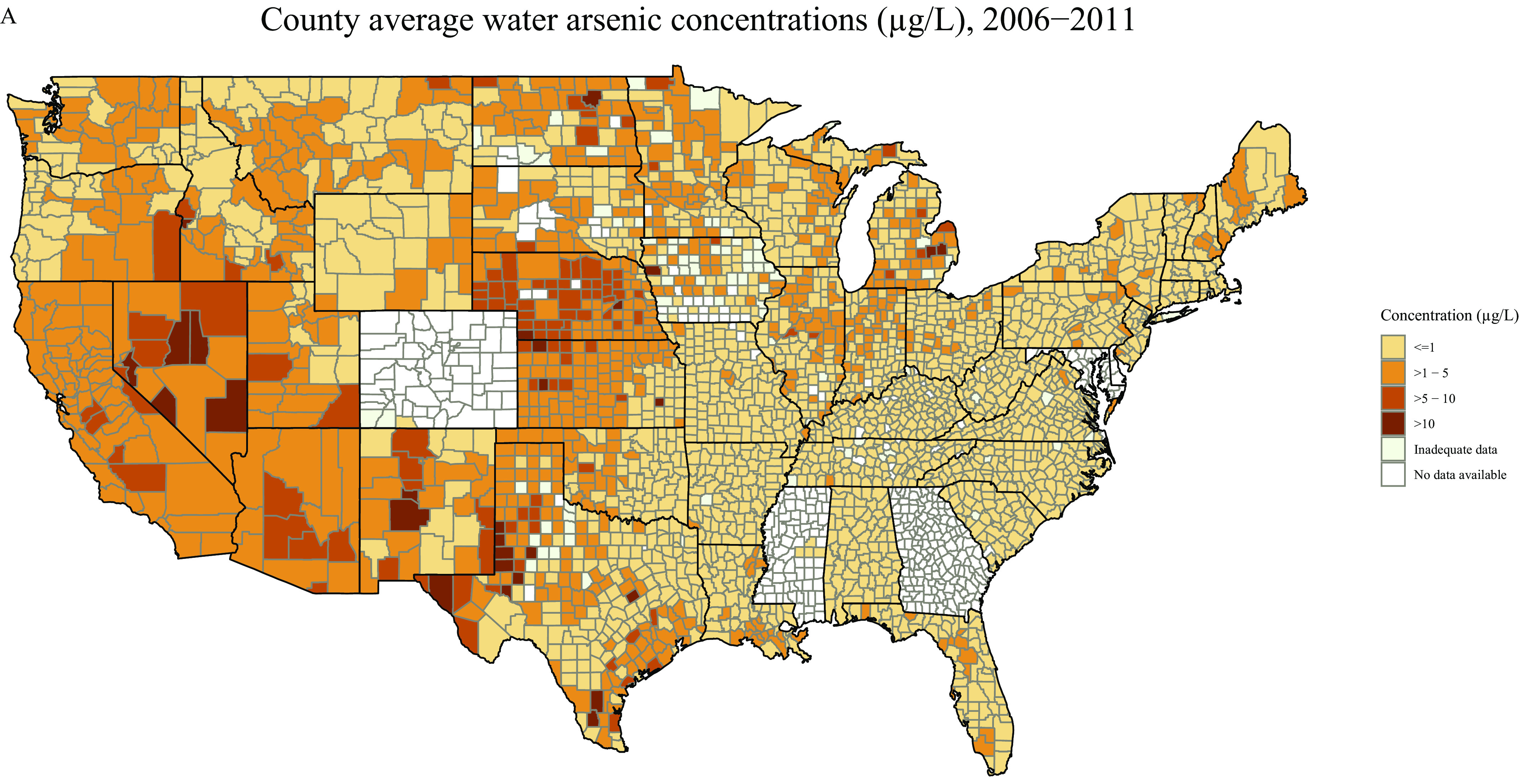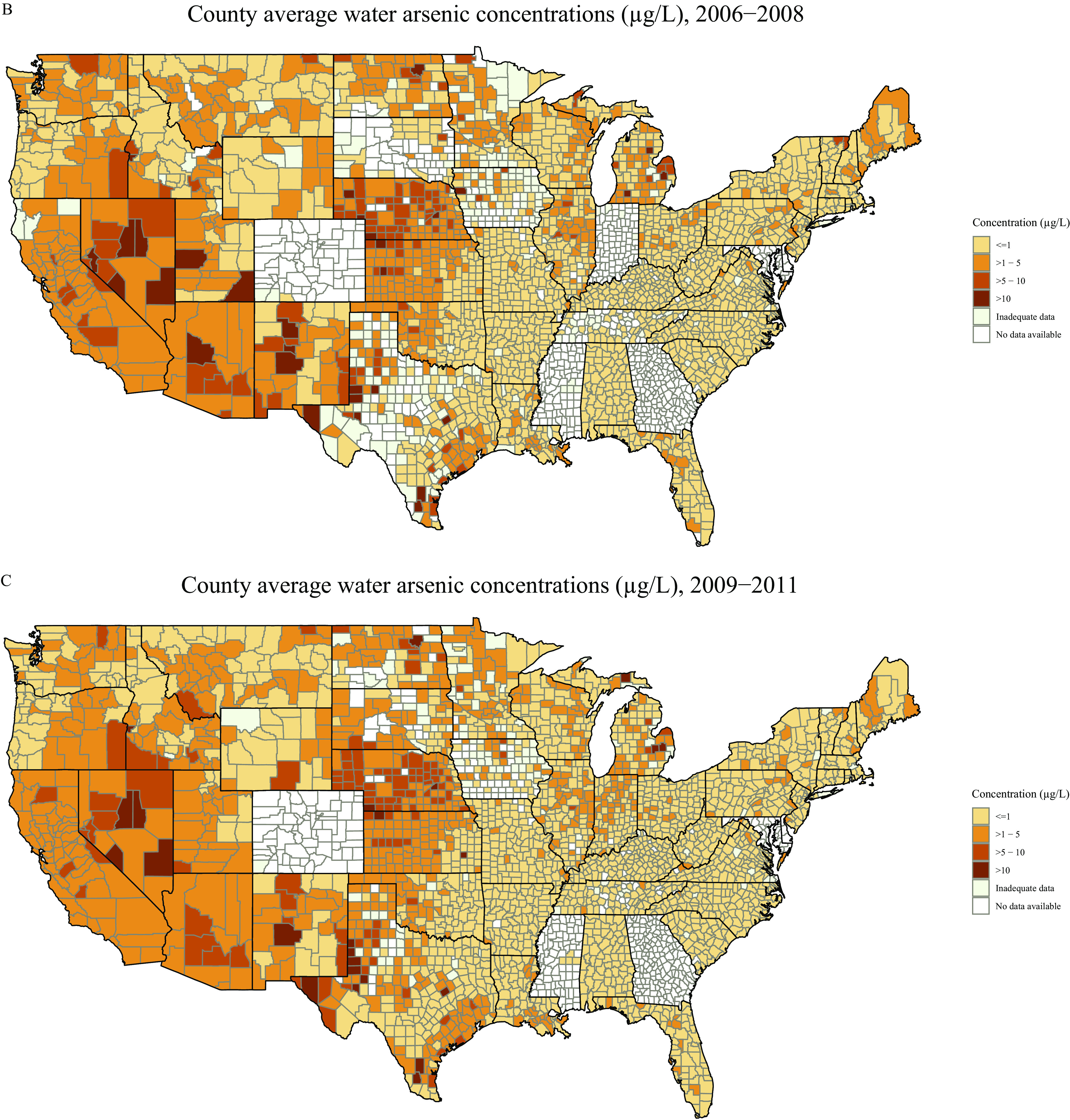Figure 3.


County-level estimated weighted average water arsenic concentrations in community water systems (CWSs) from (A) 2006–2011, (B) 2006–2008, and (C) 2009–2011 ( CWSs serving counties). Average arsenic concentrations from 2006–2011 are the averages of both 3-y time periods (2006–2008 and 2009–2011). CWS arsenic concentrations were weighted by the population served by each system to estimate the county-level weighted average CWS arsenic concentrations. Counties that were not represented by any CWSs in the SYR3 database are labeled as “No data available.” Counties with “Inadequate data” did not have CWS data representing at least 50% of the public water–reliant population for either time period (2006–2008 and 2009–2011). SYR, Six-Year Review.
